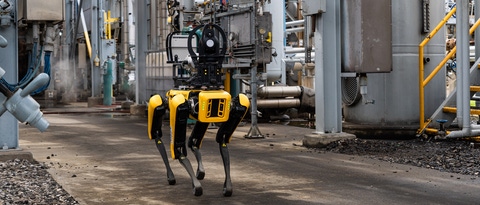Factbook
Segments
The BASF Group consists of 12 operating divisions, which are grouped into six segments. Our core businesses comprise the Chemicals, Materials, Industrial Solutions and Nutrition & Care segments. They benefit from their deep integration in our value chains and the Production Verbund. Our standalone businesses are clustered in the Surface Technologies and Agricultural Solutions segments. These serve distinct industries and compete with peers who focus exclusively on individual industries (pure players).
BASF Group segments in 2024
Core businesses
Chemicals
The Chemicals segment is one of our core businesses and forms the heart of the Verbund with its production facilities. Its Petrochemicals and Intermediates divisions market high-quality basic chemicals and intermediates to customers in downstream industries. They also reliably supply BASF’s other segments with chemicals to produce higher value-added products and in this way, ensure the competitiveness of the BASF Group.
The segment strives for technological leadership and operational excellence and focuses on individual value chains. It concentrates on the essential success factors of the traditional chemicals business: leveraging economies of scale and the advantages of our Verbund, high asset reliability, continuous optimization of access to raw materials, lean and energy-efficient processes, and reliable, cost-effective logistics. This enables fundamental cost advantages and opens up various opportunities for decarbonization. The segment creates value through process and product innovation and invests in research and development to implement new, sustainable technologies and make existing technologies even more efficient. Thanks to our integrated production processes, the carbon footprint of a number of our products is significantly lower than that of our competitors. Furthermore, by using renewable and recycled feedstocks in our production network, we can provide products with diverse sustainability attributes. Examples of these offerings include our LowPCF, ZeroPCF and Ccycled® products. The Chemicals segment is thus well positioned to drive BASF’s green transformation while supporting that of our customers.
The two divisions are continuously developing their value chains and are expanding their market position – especially in Asia – with investments and collaborations in growth markets. We want to participate in the growth of the largest chemicals market in the world and are thus currently focusing primarily on the completion and startup of our Verbund site in Zhanjiang, China, which we have planned as a pioneering project for sustainability. We are also continuously reviewing and improving our production structures in other regions and aligning them with regional market requirements, as demonstrated by the capacity expansions at the Verbund site in Antwerp, Belgium and the adapted vision for the future of the Verbund in Ludwigshafen, Germany.
Chemicals
The Chemicals segment supplies both external customers and BASF’s other segments with basic chemicals and intermediates.
- Share of sales: 16.6%
- R&D expenses: €80 million
- Investments including acquisitions1: €3,403 million
1 Additions to property, plant and equipment and intangible assets
Standalone businesses
Surface Technologies
Some of our standalone businesses are bundled in the Surface Technologies segment, which consisted of the Catalysts and the Coatings divisions until the end of 2024.
As of the beginning of the 2025 business year, the battery materials and ECMS business units, which were formerly part of the Catalysts division, are being reported as separate operating divisions within this segment, in addition to the Coatings division. Additionally, since January 1, 2025, the chemical and refining catalysts business, formerly part of the Catalysts division, has been reported as part of the Performance Chemicals division in the Industrial Solutions segment.
Together with our customers, we develop novel products and technologies for catalysts, coatings and battery materials. We also offer services in the areas of precious metals and base metals as well as surface treatments. Our aim is to drive growth by leveraging our portfolio of technologies to find the best solution for our customers in terms of functionality and cost. This helps our customers to drive forward innovation in their industries and contribute to more sustainable development.
Our key growth drivers are the positive medium-term development of the demand for chemicals in the automotive market, especially in Asia, and the shift toward sustainable low-emission mobility. Despite the current slowdown in the mobility transition, we are convinced of the long-term growth of the electric vehicle market. As one of the largest chemical suppliers to the automotive industry, the segment is developing customized, more sustainable solutions for battery materials, emission control, recycling and innovative coatings in close cooperation with its customers. Our specialties and system solutions in these areas enable our customers to stand out from their competitors.
Surface Technologies1
The Surface Technologies segment produces chemical solutions for surfaces such as automotive OEM coatings, battery materials and catalysts.
- Share of sales: 18.2%
- R&D expenses: €271 million
- Investments including acquisitions2: €499 million
1 The chemical and refining catalysts business, which was previously reported as part of the Catalysts division, is part of the Performance Chemicals division since January 1, 2025. The figures for 2024 have been restated accordingly.
2 Additions to property, plant and equipment and intangible assets
